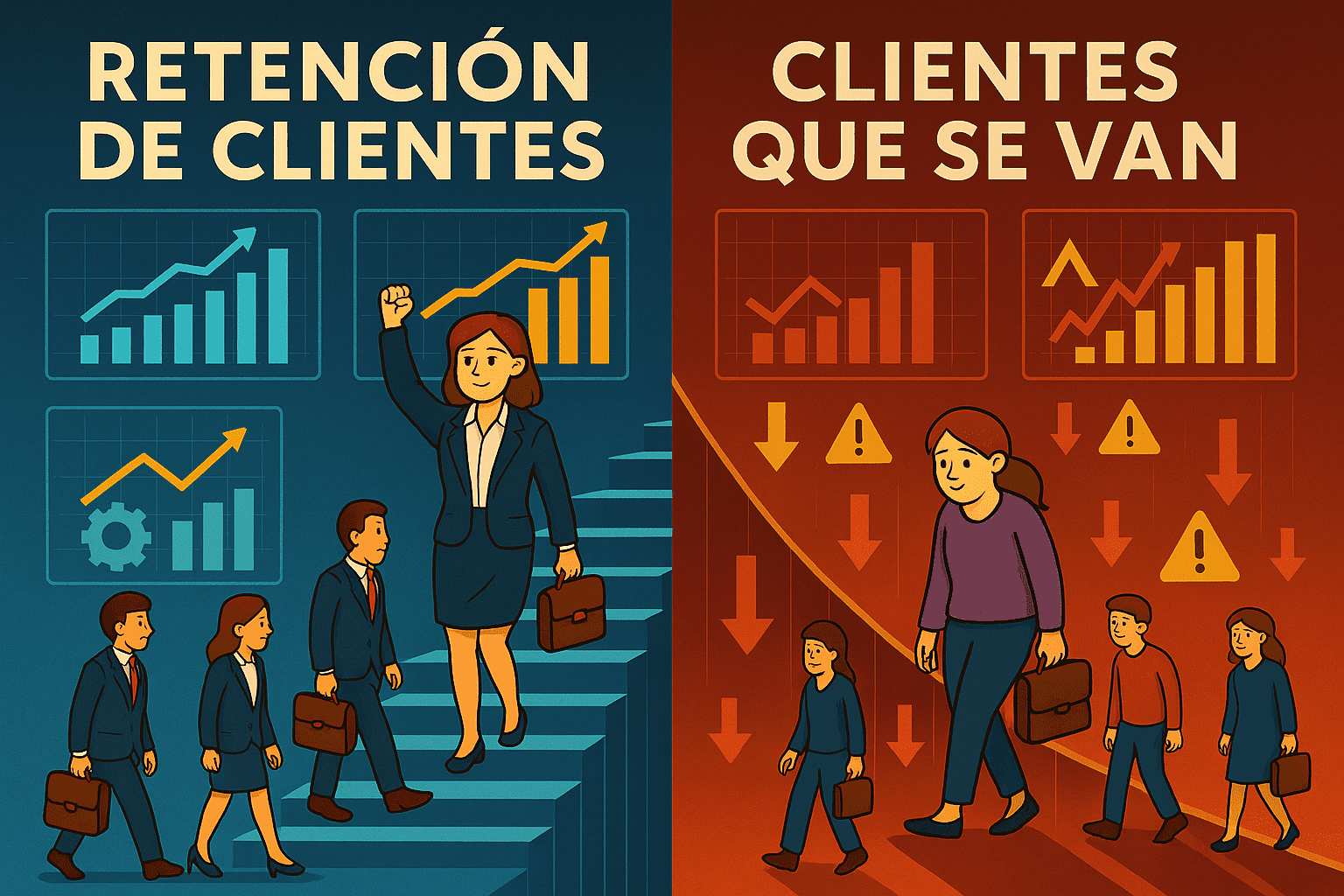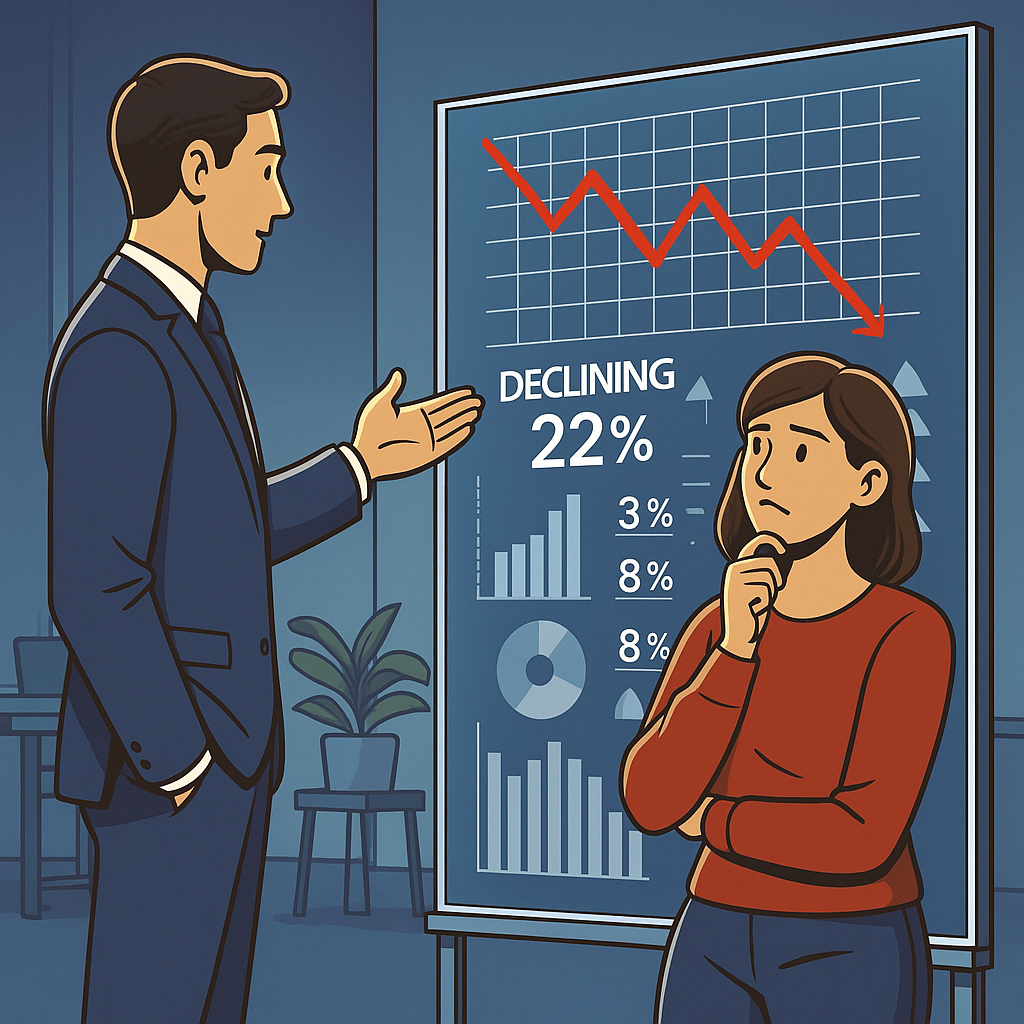
Customer Retention: The Real Battlefield of CSM
When I started in Customer Success, I thought my job was about helping customers use the product, solving doubts, providing service, and ensuring satisfaction. I believed that if the product was good and the customer was happy, renewal would happen automatically.
💣 BOOOM! That thought blew up in my face when my first renewal cycle came around. I had worked with customers for months, maintained constant communication, and delivered a great product, but when renewal time came… Ciao! Sounds familiar?
”We love the product, but we don’t use it as much as we thought."
"We think it’s useful, but we haven’t seen a real impact on our business.”
After analyzing what happened, I realized that retention is not a decision made at the renewal stage; it’s the result of the strategy you implement from day one. And just like I did at that moment, not everyone is executing it correctly. 😱😱
Over time, I discovered that in Customer Success, retention matters more than acquisition.
Here are the lessons I learned, with real examples and a guide to help you apply them in your day-to-day work as a CSM. 👇
🔗 Retention Starts on Day 1: Don’t Wait Until Renewal to Act

One of my biggest mistakes was thinking I could start working on retention when renewal time was approaching. The truth is that the decision to stay or leave starts at onboarding. When a customer feels the excitement and gets results from your product early on, you’re already ahead.
⭐ How to do it right:
- Design a clear Customer Journey where the client sees value within the first 30 days. Use walkthroughs and personalized check-ins to automate the process.
- Implement a proactive onboarding with guided sessions and tailored materials.
- Schedule regular check-ins to track usage and identify early barriers.
🗣️ Real-life example:
A customer, the CTO of enterprise, delegated the use of a new software to their Team Leads, expecting them to track departmental activities. However, during their ‘weeklys’, no reports, no new action plans, or even metrics were ever discussed… and the software was barely mentioned.
Weeks later, I called the CTO and asked why we weren’t seeing engagement. His response? “There’s no progress.”
🔎 The hidden truth: There was no progress because there was no action plan. The Team Leads knew the product because we had provided personalized sessions, but…
❌ Why didn’t it work? Simple—they didn’t see value in the product. They had no personalized onboarding, no individualized follow-ups, and no clear objectives from leadership (the CTO), so they didn’t know what was expected or how to execute it.
✅ How did we fix it? What was the result? By applying the tips above, product usage increased by 80%, and renewal was secured. The company saw cost savings and improved productivity by setting clear individual action plans with ongoing tracking.
🏅 Bonus Tip → If you want a deep dive into how to prepare an onboarding strategy, check out this post: Foster Customer Loyalty from Day One
🥷🏻 A Health Score Without Action is Just a Number

At first, we implemented a Health Score based on product usage, but it was useless because we weren’t acting on the data. I realized that having a risk alert without an action plan is pointless.
⭐ How to do it right:
- Define key health indicators: product usage, support interactions, NPS, session attendance.
- Identify bottlenecks and report trends.
- Set up automated alerts when a customer shows signs of disengagement.
- Take action: If you detect low activity, schedule a call, send valuable content, or investigate barriers.
- Use an Exit Interview Framework to understand why customers don’t renew.
🗣️ Real-life example:
A customer completely stopped using the product, and churn was inevitable. We hadn’t heard from them, but during a call, I found out they needed a specific type of custom report with concrete metrics, which our solution couldn’t generate.
🔎 After understanding their exact needs, I worked closely with them to create a tailored report, aligned with their business objectives and executive committee expectations.
✅ Result: Renewal + upselling of 4 products and 3 additional licenses.
🏅 Bonus Tip → Being data-driven isn’t optional, it’s essential. If you’re not leveraging analytics, you’re already behind. Learn more here: The Power of Analytics in CS: From Data to Action
🔎 Personalization Is Not a Luxury, It’s a Necessity
One of my biggest clients didn’t renew because they felt our strategy wasn’t tailored to their needs. That’s when I realized mass customer management doesn’t work, even within the same industry.
⭐ How to do it right:
- Segment customers by usage, needs, and goals.
- Personalize communication and follow-ups according to their lifecycle stage.
- Conduct Quarterly Business Reviews (QBRs) with real impact data.
- Structure renewal follow-ups and be proactive.
🗣️ Real-life example:
We assumed this client had the same needs as others based on their company data—and that was the mistake. Every executive has their own objectives, and even within the same industry and department, each company has its own internal challenges and priorities.
✅ Result: We lost the client, but it taught us a valuable lesson for all the future ones to come.
🏅 Bonus Tip → Personalization is key today.
Never take anything for granted—dig deeper and make sure each client verbalizes their real needs.
Here’s my link to help you tailor your communication strategy with customers:
Action Plan: Creating an Effective Funnel for Retention
💍 Don’t Sell Renewals, Build Commitment

Retention isn’t about convincing customers to renew. It’s about creating a relationship where renewal is the natural result of continuous value.
⭐ How to do it right:
- Ensure the customer sees tangible value in the product.
- Base your action plan on real data and feedback, not assumptions.
- Build strategic relationships, not just transactions.
🔥 Conclusion: Retention Is Customer Success in Action
If I’ve learned one thing in my career, it’s that customers don’t renew because the product is good—they renew because it becomes essential to their business.
📌 Four things you can do today:
- Review your onboarding process
- Evaluate your Health Score and act on it
- Personalize your strategy with segmentation and action plans based on real feedback
- Always, always, always put the customer at the center and make them shine

🎯 And finally, leverage the power of automation and AI. It will take both your team and your customers to the next level.
🚀 The biggest companies are already doing it—what are you waiting for? If you’ve faced similar challenges or have questions about improving retention, let’s talk!